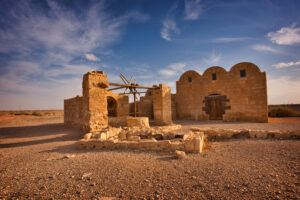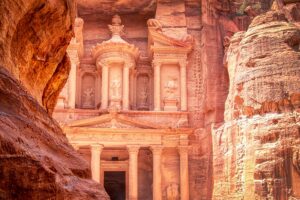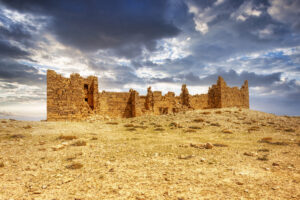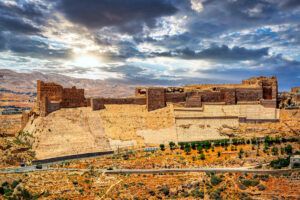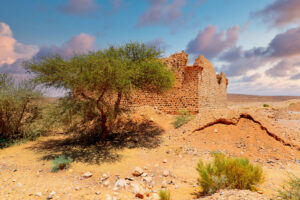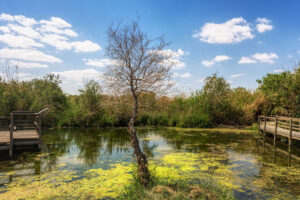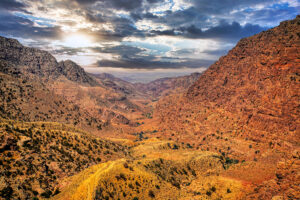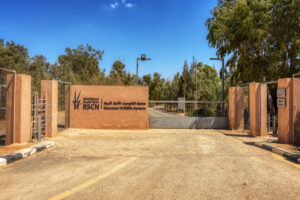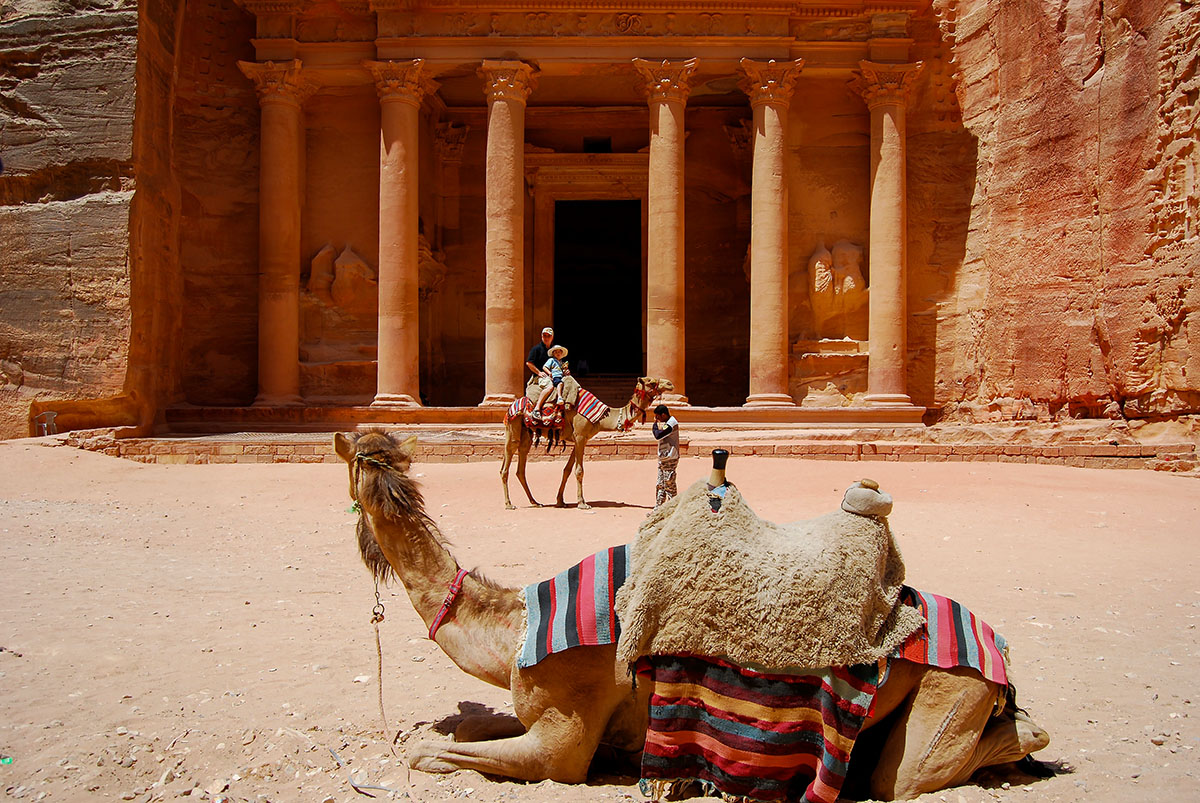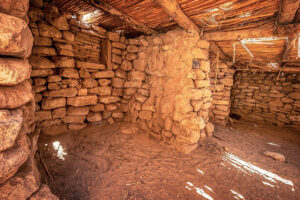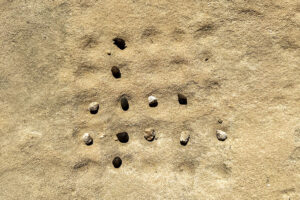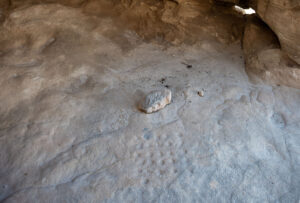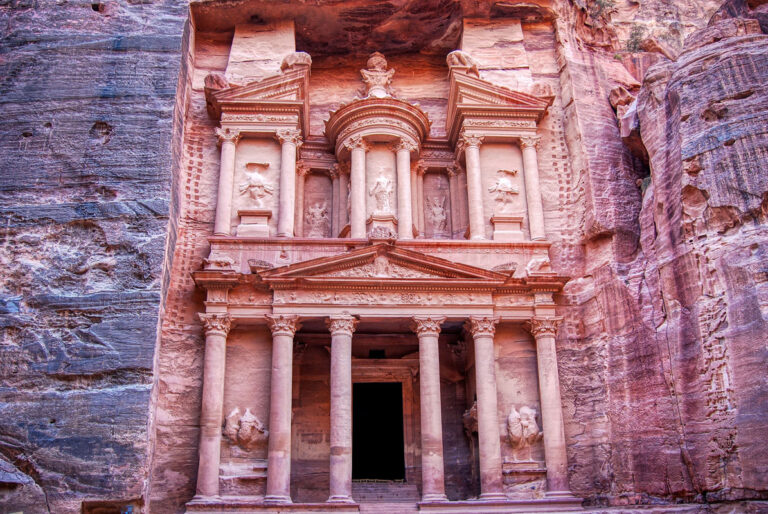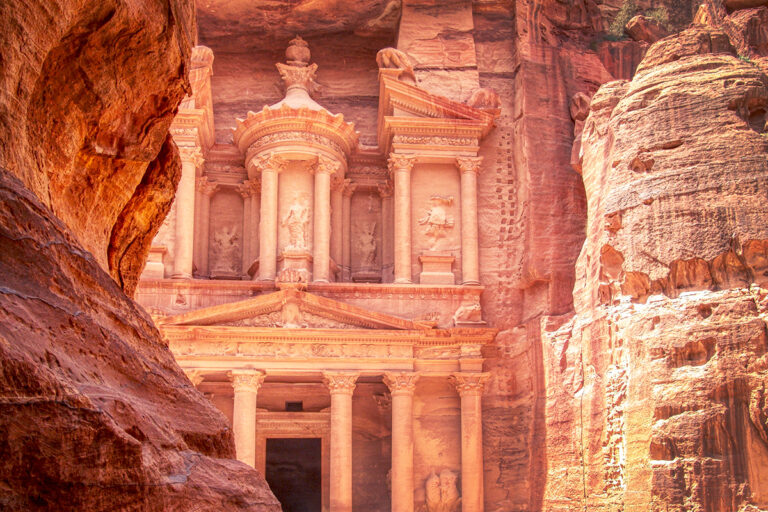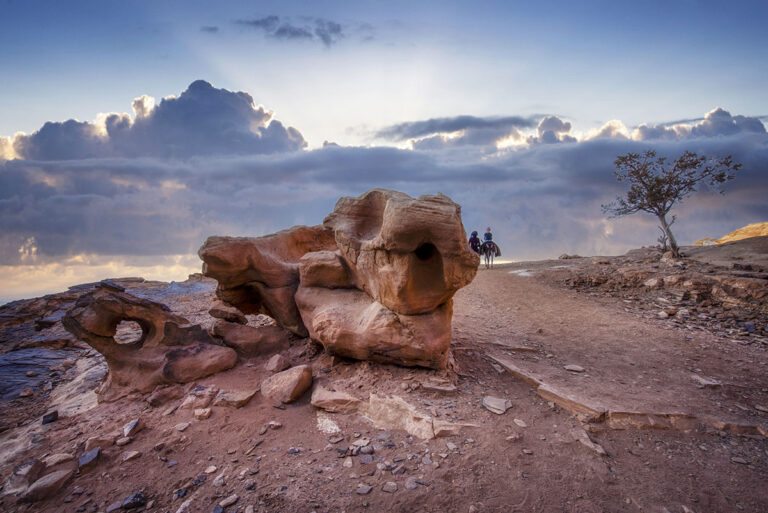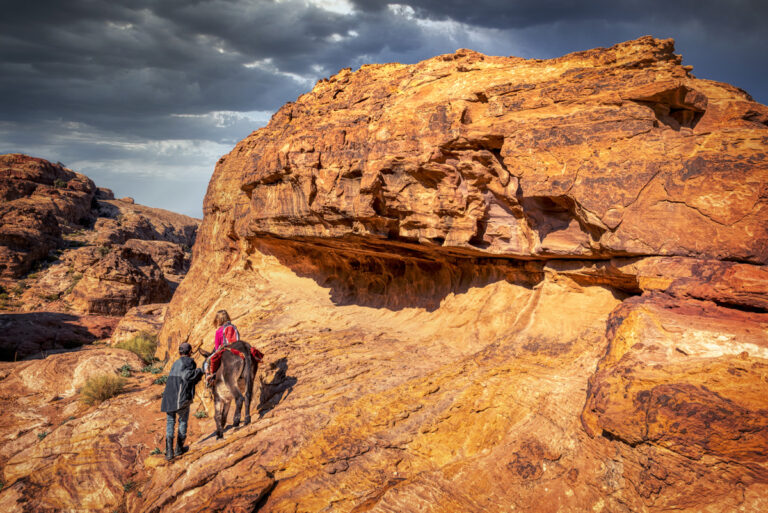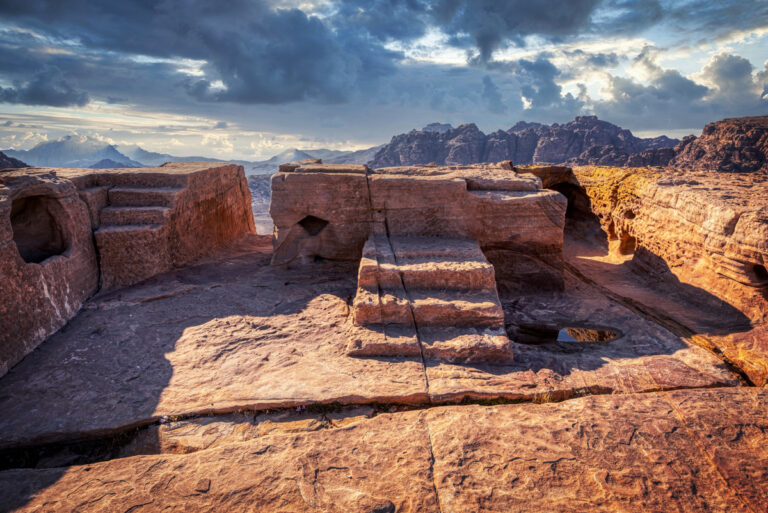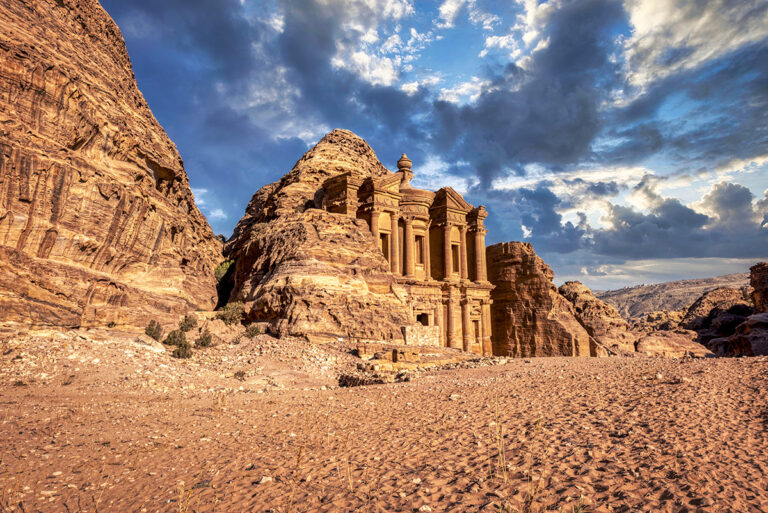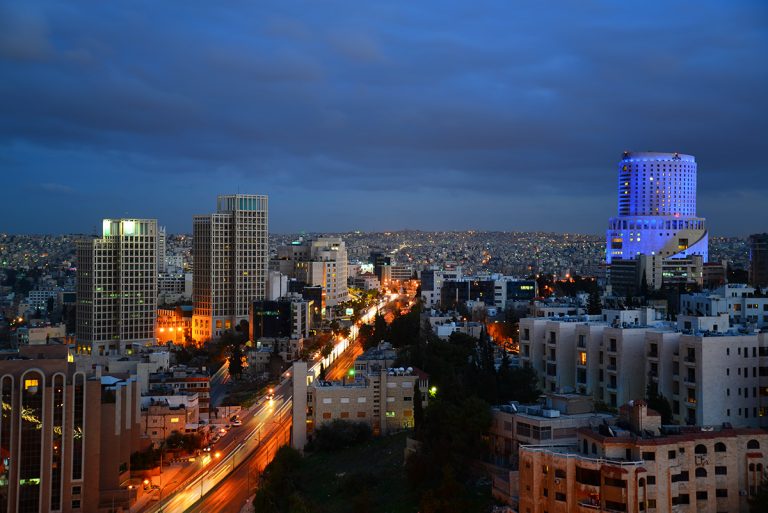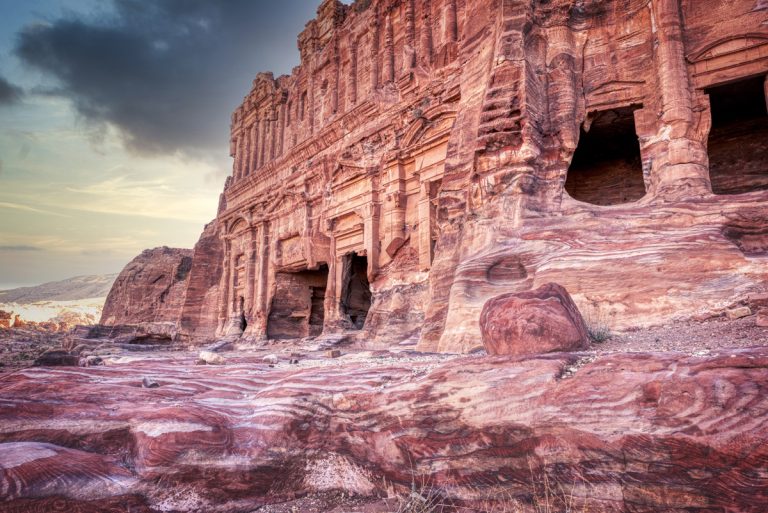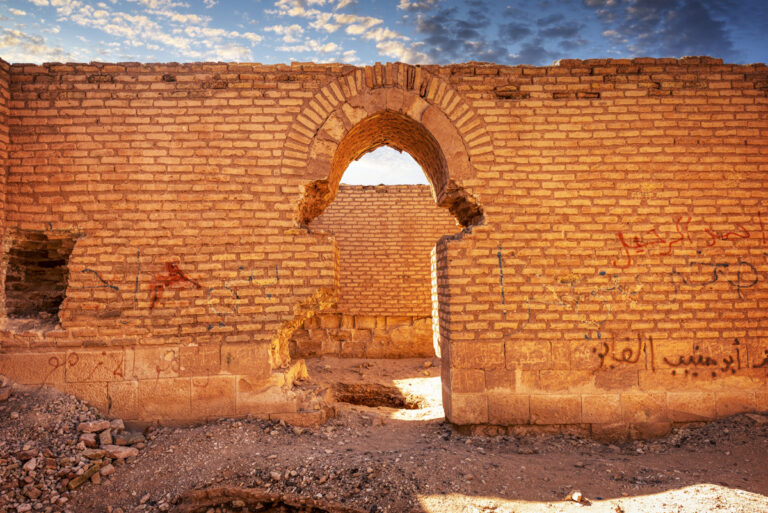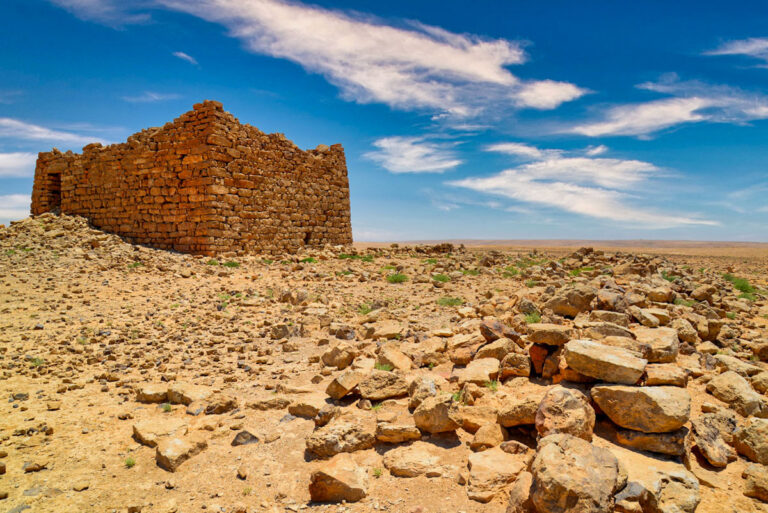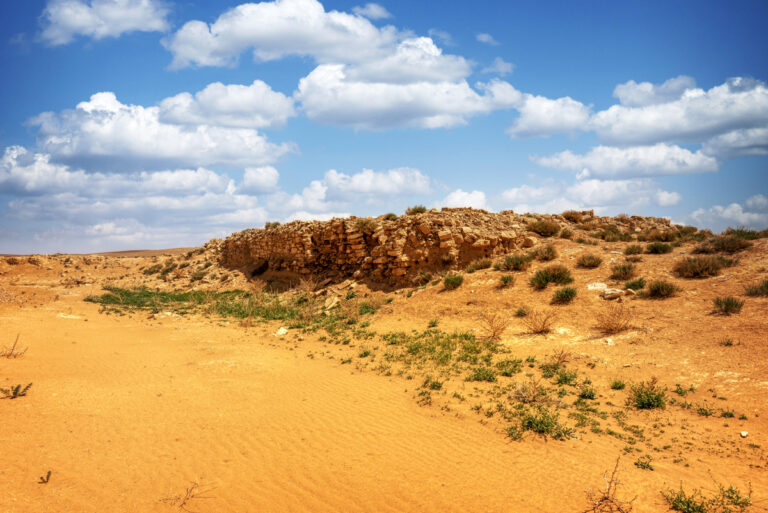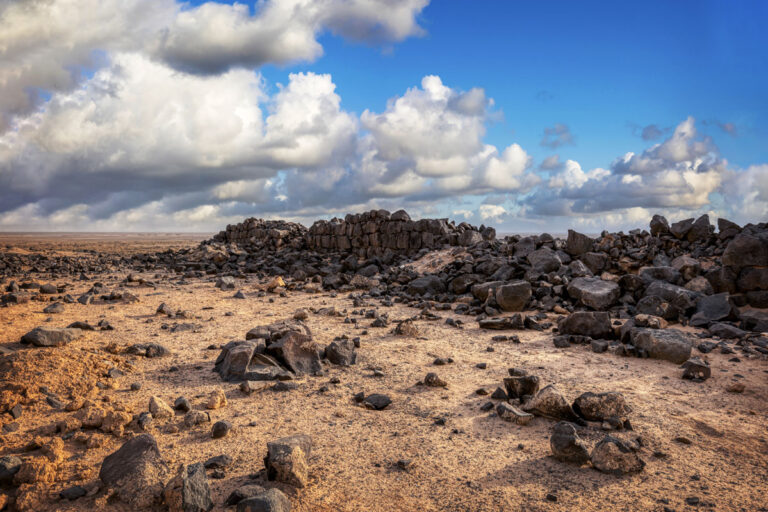Petra, the ancient “Rose City” carved into the desert cliffs of southern Jordan, is a breathtaking testament to human ingenuity and history. Once the thriving capital of the Nabataean Kingdom over 2,000 years ago, Petra strategically connected ancient trade routes between Arabia, Egypt, and the Mediterranean. Its remarkable rock-carved facades and sophisticated infrastructure underscore the creativity and skill of its creators.
The Petra Main Trail is the gateway to one of the world’s most extraordinary archaeological wonders. Stretching approximately 8 kilometers, this moderately easy trail invites travelers to immerse themselves in Petra’s rich history, awe-inspiring architecture, and breathtaking natural beauty. The trail can be completed in 4 to 5 hours, though many visitors linger longer to fully absorb its wonders.
Petra Visitor Centre
The Petra Visitor Centre is the starting point for your adventure into Jordan’s most iconic site. Situated at the entrance to the ancient city, this modern facility offers essential services and valuable insights that help visitors make the most of their experience.
Here, guests can purchase entry tickets while also accessing a variety of resources designed to enhance their visit. Knowledgeable staff are on hand to provide information, maps, and recommendations tailored to your interests and schedule. For those seeking a deeper understanding of Petra’s history and cultural significance, trained guides are available for hire, ready to take you on a fascinating journey through this ancient marvel.
Additionally, the centre offers practical amenities such as restrooms, a gift shop filled with local souvenirs, and a café to recharge before beginning your exploration. This is also an opportunity to make a last-minute purchase of a hat, sunscreen, water, or snacks from the market within the centre.
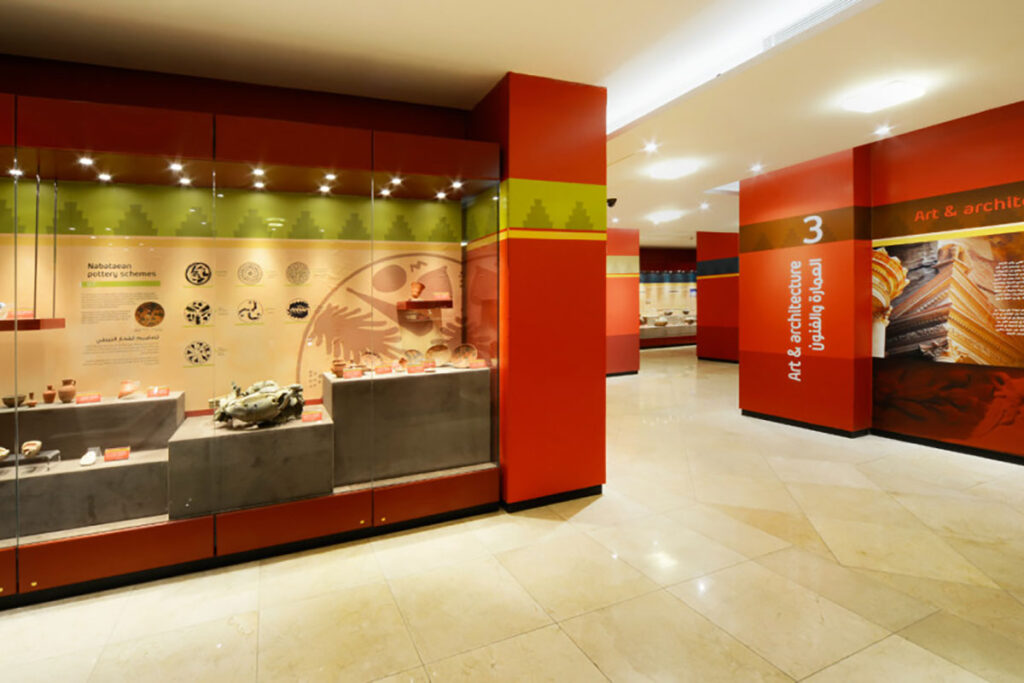
Bab Al-Siq
The road stretching between the Petra Visitor Centre and the Siq, approximately 800 meters long, serves as the initial stretch of your Petra experience, immersing you in the desert’s dramatic beauty even before you reach the famed Siq. As you walk this route, the landscape begins to unveil its rugged charm. Surrounding you are rolling hills of sandstone in warm shades of pink, ochre, and gold, hinting at the stone-carved wonders that lie ahead. Small pockets of greenery punctuate the dry terrain, a reminder of the Nabataeans’ ingenious mastery over nature in this arid environment.
Along the way, visitors can spot remnants of Petra’s past, such as ancient rock carvings, tombs, and irrigation channels built by the Nabataeans to sustain their thriving city. Nearby Bedouin artisans often set up small stalls, offering beautiful handmade jewellery, traditional crafts, and refreshing drinks.
Alternatively, visitors can cover this distance on horseback, which is often offered at the entrance or by a golf cart to save time, preserve energy, or accommodate elderly or less fit travellers.
The Siq
The Siq, a dramatic natural gorge nearly 1.2 kilometres in length, carves a narrow path through towering sandstone cliffs that soar up to 80 meters high. As you step into the Siq, time seems to dissolve, and the anticipation of what lies ahead begins to build with every step.
The gorge itself is a geological marvel, formed over millennia by the relentless forces of water and tectonic shifts. Its walls showcase layers of sandstone in vivid hues of orange, pink, and red—the famed “rose-red” shades that define Petra. The play of sunlight and shadow within the Siq creates an almost magical effect, with the colours shifting and deepening as the day progresses. Along the way, you may notice intricate rock patterns and fascinating formations etched by nature.
The winding path of the Siq heightens the sense of mystery, drawing you deeper into its folds. Around bends and turns, the gorge teases you with glimpses of the grandeur ahead. Finally, as you approach the end, the iconic Al-Khazneh (The Treasury) suddenly begins to emerge—a breathtaking sight framed perfectly by the narrowing walls of the Siq. The sheer grandeur of this reveal, as light bathes the famous façade, leaves visitors in speechless wonder.
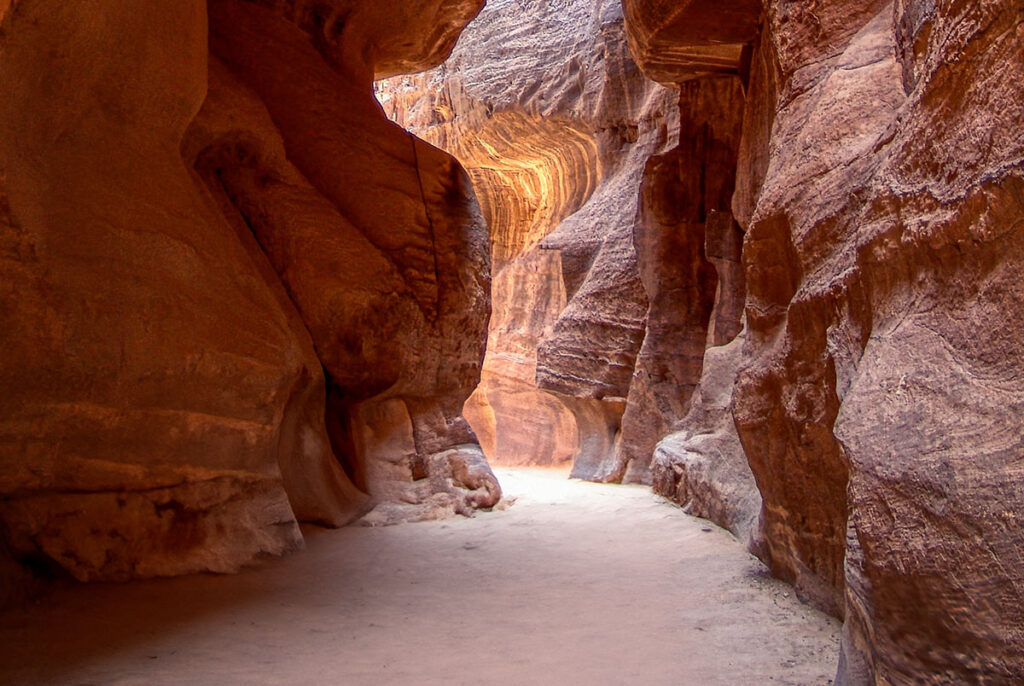
The Treasury (Al-Khazneh)
Emerging like a dream from the narrow confines of the Siq, Al-Khazneh, or “The Treasury,” is a sight that forever imprints itself on the hearts of those who behold it. This majestic structure, carved directly into the rose-coloured sandstone cliffs, stands as one of the most iconic and mesmerising landmarks of Petra. Its grandeur, artistry, and mystery make it a symbol of the ingenuity and sophistication of the ancient Nabataeans.
Believed to have been constructed in the 1st century AD, Al-Khazneh originally served as a royal tomb, although legends later spun tales of hidden treasures within—hence its evocative name. The façade, standing an awe-inspiring 39 meters tall and 25 meters wide, is a masterpiece of Hellenistic architecture blended seamlessly with Nabataean art. Intricate carvings of deities, mythological figures, and floral motifs adorn its surface, each detail meticulously etched into the rock, imbuing the monument with a sense of timeless grace. Notable is the central urn crowning the structure, rumoured in folklore to conceal treasure, though it remains solid stone.
Consult a local Bedouin for the best photography spots and angles for a small fee, particularly from the elevated platforms; it will be worth the effort and the expense.
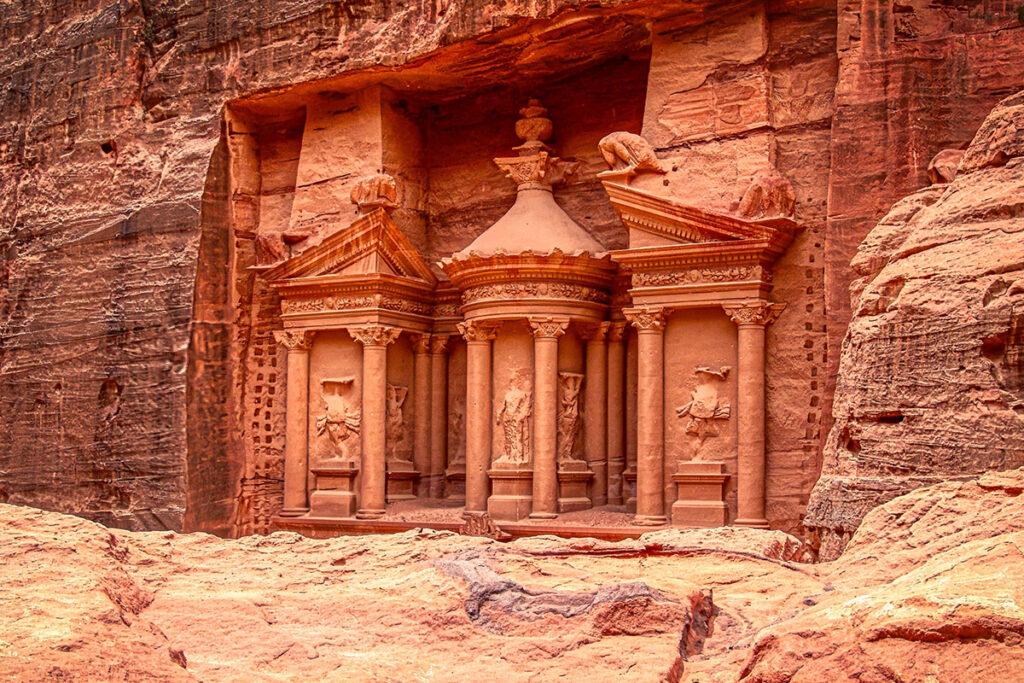
The Street of Facades
Next, the Petra Main Trail guides you to the Street of Facades, a visually striking row of tombs and cave dwellings carved into the sandstone cliffs. These facades are simpler than other structures but offer fascinating insights into Nabataean craftsmanship and daily life. Many of these tombs were likely used by middle-class Nabataeans, providing an intriguing contrast to the grandeur of Al-Khazneh or the Royal Tombs. The weathered details, with sharp edges softened over time by the desert winds, give the Street of Facades a raw, timeless beauty. This section of Petra feels alive with history, offering glimpses into a thriving community that once inhabited the city.
The Theater
Carved entirely into the rock face, the Theater is a testament to both Nabataean engineering and Roman cultural influence. With a seating capacity of over 8,000, this amphitheater was uniquely designed to host theatrical performances, public gatherings, or even religious ceremonies. It was originally constructed by the Nabataeans but later expanded after the Roman annexation of Petra in 106 CE, blending styles from both civilisations. The Theater’s positioning, nestled amidst the surrounding tombs and cliffs, adds to its dramatic appeal. Visitors can explore its stepped seating and take in sweeping views of the ancient cityscape, imagining the vibrant life that once filled this space.
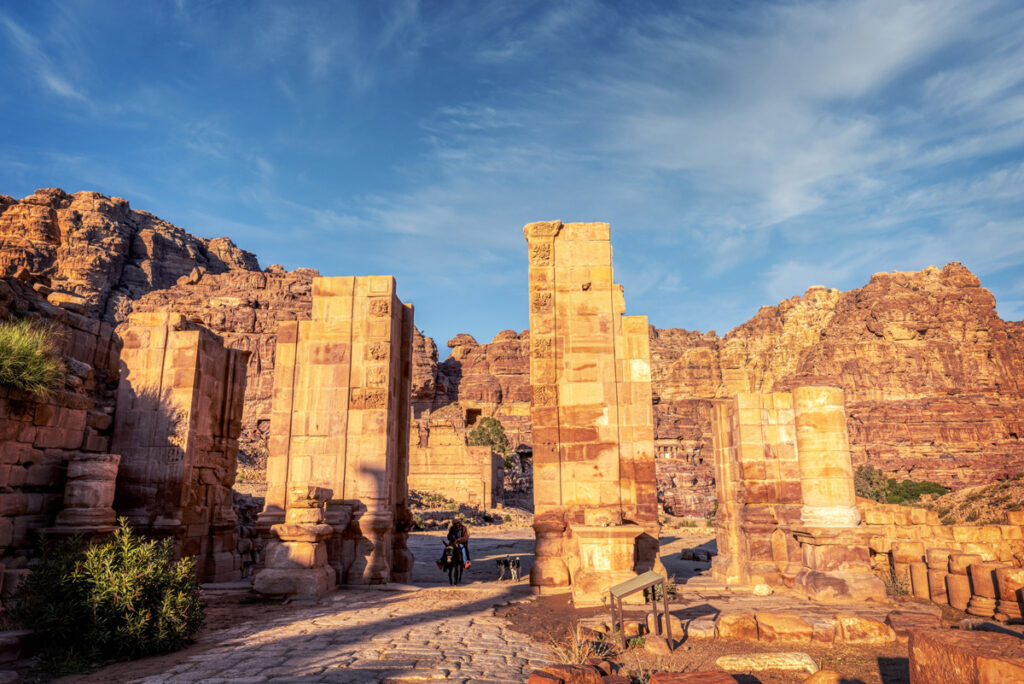
The Royal Tombs
The trail concludes with the majestic Royal Tombs, a cluster of impressive burial sites carved into the eastern cliffs. These tombs, including the Urn Tomb, Silk Tomb, Corinthian Tomb, and Palace Tomb, are among the most visually captivating structures in Petra. The Urn Tomb stands out due to its prominent location and grand colonnaded courtyard, which later served as a church during Byzantine times. The Silk Tomb is remarkable for its swirling rock patterns, resembling silk fabric in shades of orange, pink, and red. The Corinthian Tomb echoes the design of Al-Khazneh, though weathered by time, while the sprawling Palace Tomb resembles a royal residence. Together, these tombs showcase the Nabataeans’ exceptional architectural innovation and respect for their dead. Standing here, high above the city, visitors gain not only panoramic views of Petra but also a profound sense of its enduring legacy.
Each of these attractions offers a unique window into the artistry, culture, and ingenuity of the Nabataeans, making the Petra Main Trail a walk through history and wonder. If you have the time and energy, it’s a good idea to continue to the Monastery using the Monastery Trail (Ad-Deir Trail). This way, you’ll have the opportunity to explore other parts of Petra the next day. Just keep in mind that you will need to return the same way, so plan your time accordingly.
